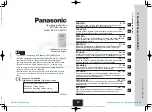
NOTE:
If you want to define a template based on ownership or how many instances are currently
running, you can check the 'Unmatched procs' table on a particular host screen or the 'Processes
not matched by this template' table on a template editing screen to get this information. See for
tips on finding specific process attributes.
Rule Fields and Their Descriptions
The following figure shows the Rules portion of an application template. Fields and their
descriptions follow the image.
Description
Field
Rules can be simple or complex, and are based on types that can be added to or deleted from the rule.
Possible type values used to construct a rule include:
• Or
Can contain a list of one or more And, Or, User, Group, Path or Cmdline values.
Effect: Any one of the rules within this statement can be true to match a process to the application.
• And
Can contain a list of one or more And, Or, User, Group, Path or Cmdline values.
Effect: All of the rules within this statement must be true to match a process to the application.
• User
Supply the user name associated with the process. In addition to literal names, regular expressions
are allowed.
Effect: Make matching to a process dependent on a particular user.
• Group
Supply the group name of the process. Regular expressions are allowed.
Effect: Make matching to a process dependent on a particular group.
• Path
Supply the executable path of the process. Regular expressions are allowed.
Effect: Make matching to a process dependent on a particular executable path.
• Cmdline
Supply the command line arguments used to start the process. Regular expressions are allowed.
Effect: Make matching to a process dependent on a particular command line argument.
Rule
36
Procedures
















































